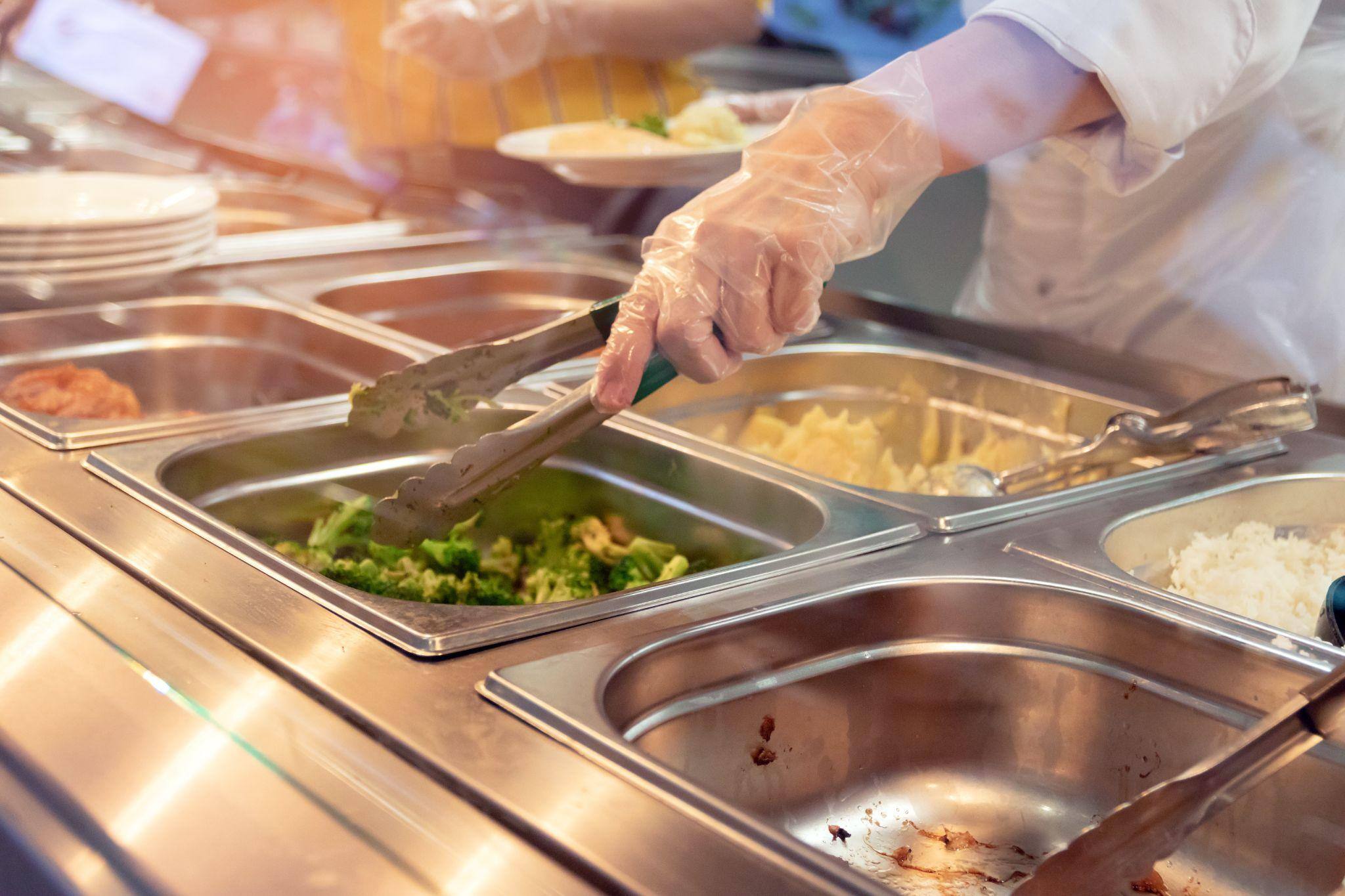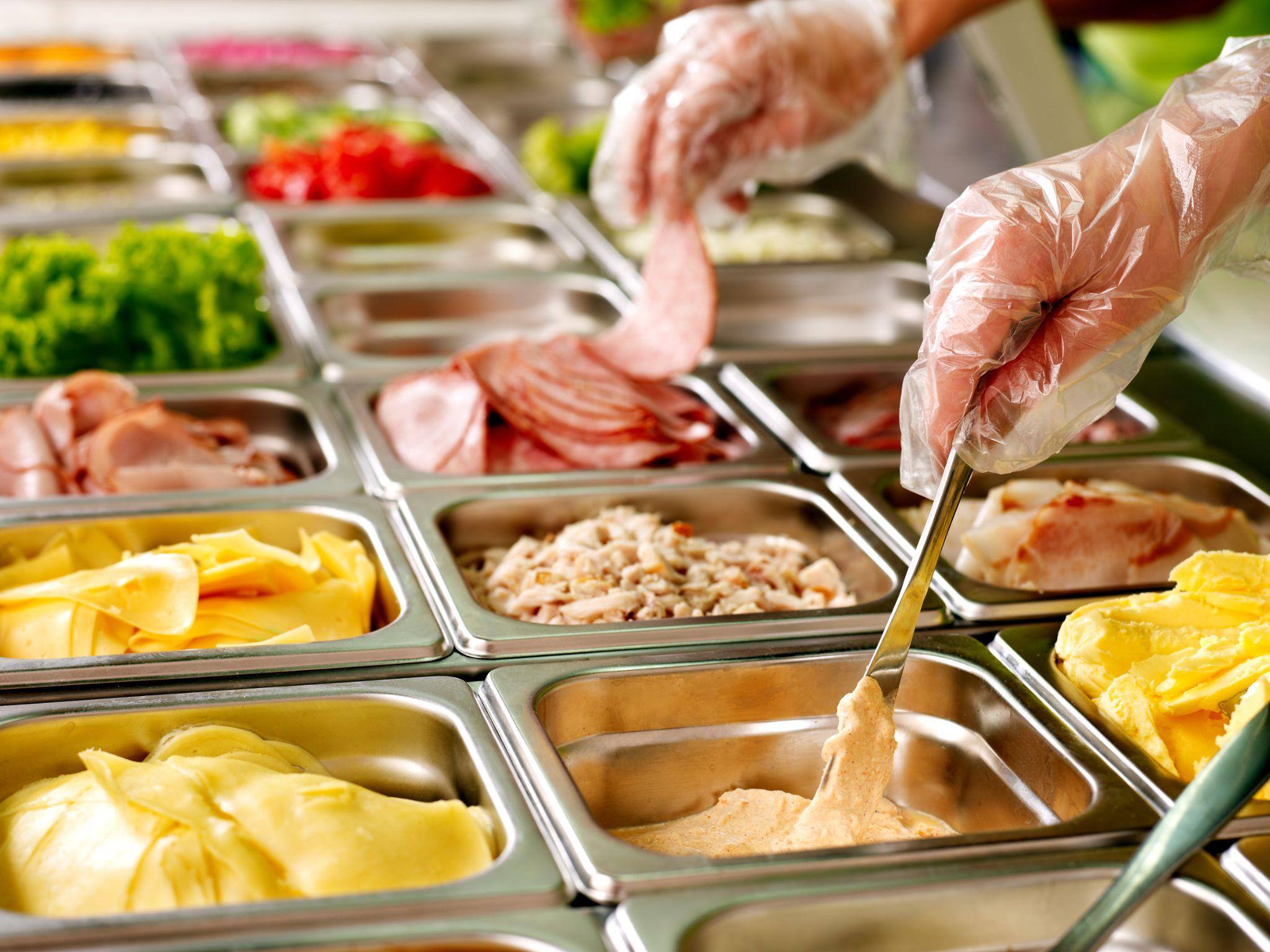
A food hazard refers to any agent in food that can cause illness or injury when consumed.
In educational environments, failing to prevent food hazards can lead to severe consequences, including foodborne illnesses, allergic reactions, and injuries from contaminated food. These incidents can disrupt the learning environment, cause significant health issues among students and staff, and damage the institution’s reputation.
By implementing comprehensive food safety protocols, schools and universities can effectively manage and eliminate these risks, ensuring the health and safety of their dining community.
Three Types of Hazards That Make Food Unsafe
There are three categories of hazards that can make food served in dining halls, cafeterias, and other student foodservice areas – unsafe to eat. Understanding these hazards is the first step in keeping students and other diners safe.
1. Physical Food Hazards
When food is contaminated with inedible materials, these physical contaminants can cause injuries including choking, cuts, or internal injuries. Some common physical hazards in food include hair, metal scraps, glass pieces, and fruit pits.
2. Chemical Food Hazards
Naturally occurring or unintentionally introduced into food items during processing, chemical hazards can cause chemical burns, internal injury, poisoning, or long-term health issues. Examples of common chemical hazards in the food industry include pesticides, machine oils, cleansers and cleaning solutions, dissolved metals and excessive food additives.
3. Biological Food Hazards
Contamination of food by microorganisms including bacteria, viruses, mold, parasites, or yeasts can cause infection and food poisoning. In the United States, the most common biological hazards in the food industry are Norovirus, Salmonella, Clostridium perfringens, Campylobacter, and Staphylococcus aureus.1
Implementing automated food safety practices can help eliminate the three categories of food safety hazards that can cause foodborne illness or injury to students and faculty.
How to Eliminate Food Safety Hazards in Student Meals

While every educational facility’s food safety protocols should be tailored to their unique needs, the following steps are essential to safeguard against food safety hazards.
Visually Inspect for Physical Hazards
Many physical hazards in food can be found with a visual inspection performed at every step of inventory management and meal preparation.
- Train staff to be alert to the possibility of dangerous food contaminants and to actively look for them.
- Inspect packaging for damage and unpacked food products for any signs of contamination with shells, husks, pits, glass, plastic, or metal.
- Return any food items to the supplier that appear to be contaminated and report the findings as appropriate.
- Discard any food that has been in contact with cracked glass, plastic, or any inedible contaminant during storage or preparation.
Be Alert for Chemical Hazards
It is not always possible to identify a chemical hazard in food, but steps can be taken to react to warning signs and prevent chemical contamination during food storage and preparation.
- Inspect deliveries and be aware of unusual smells when opening a food item that might indicate chemical contamination.
- Use only food-safe cleaning products on preparation surfaces and utensils.
- Taste a sample of each batch of foods to be served and react to any issues.
- Stay aware of open recalls and current food safety issues.
Prevent Biological Hazards
Preventing microscopic hazards such as bacteria, viruses, and parasites from reaching your students, staff and guests requires stringent adherence to food safety protocols. Because clues of biological contamination are subtle and often not visible to the naked eye, prevention is the best practice to keep diners safe.
- Do not accept frozen or refrigerated deliveries that are outside the safe temperature range for those products.
- Discard or return products which come in broken, swollen, or leaking packages.
- Monitor temperatures and times in freezers, refrigerators, and on serving tables to maintain food quality and limit bacterial growth.
- Implement procedures to prevent cross contamination between raw and cooked foods or hot and cold foods.
- Discard any food that has passed its safe holding time or temperature or has an unknown history.
Be Aware of Allergen Hazards
While it is not considered one of the top three, another food safety hazard your staff must be aware of is food allergens. Protecting diners from unknowingly consuming allergens, from both ingredients and contaminants, is another important step in your food safety planning.
- Mark or label food products that contain common allergens like eggs, nuts, shellfish, wheat, and dairy.
- During food preparation, prevent cross contamination from surfaces, containers, and close contact with allergenic ingredients.
- Train staff to prepare food items using approved recipes and consistency to avoid introducing potential allergens to foods your diners have safely eaten in the past.
Ensure Compliance by Fostering a Culture of Safety

Building a culture that fosters awareness and accountability within your food service team is a powerful step toward making cafeterias, restaurants and other dining areas a safer place to eat. Food safety standards and protocols used to identify hazards are only as good as the compliance of your foodservice staff. Creating a food safety management plan and installing the tools to track staff and equipment compliance can help eliminate these hazards before they impact diners and your bottom line.
While staff might be marking a manual checklist to keep track of food checks and cleaning procedures, handwritten paperwork is often subject to human error and intentional inaccuracies. Automated checklists can help to accurately and efficiently identify hazards in food by tracking critical food safety steps like temperature control and personal hygiene. They can also prevent the cross-contamination of foods during preparation.
By implementing a FSMS Food Safety Management System that tracks task completion, requires essential steps, and alerts supervisors to issues in real time – schools and universities can reduce the risk of contaminated food being served to diners by proactively identifying food hazards before they happen.
Baltimore City Schools: A Case Study in Food Safety
In a case study involving Baltimore City Public Schools, ComplianceMate sensors were installed in freezers and refrigeration units throughout the foodservice network. This system provided vital information to a cloud-based management and reporting software, enabling administrators and foodservice managers to monitor the success of safe food handling procedures throughout the life cycle of every school meal.
The system ensured that food safety plans aligned with the school’s Hazard Analysis Critical Control Points (HACCP) policy. This policy outlines safe temperature ranges and holding times for all food types served, allowing schools and universities to react with appropriate corrective actions to protect the health and safety of students and staff.
The success in this case study has led to plans to install ComplianceMate systems across all sites in the Baltimore school district. This system not only protected the safety of the food supply and reduced waste but also is expected to yield cost savings in labor, food costs, and cleaning and storage involved in recovery from equipment failure and inventory loss.
Enhance Food Safety in Schools with ComplianceMate Technology
Colleges, universities, and school districts like Baltimore City Public Schools can often serve as many meals in a day as many major restaurant chains. Implementing the same technology solutions used in commercial kitchens can help school cafeterias and dining halls eliminate food safety hazards, prevent food waste, and identify problems in real time.
ComplianceMate’s food safety technology offers comprehensive temperature monitoring with wireless sensors, automated checklists, and real-time alerts, ensuring continuous food safety compliance and reducing hazards. Our education-focused food safety solutions provide remote access and data analysis and remain operational even during power outages.
Sign up for a free demo today to see how ComplianceMate can enhance food safety and efficiency for your institution.
Click here to read FAQs about our school food safety solutions.
Source:



